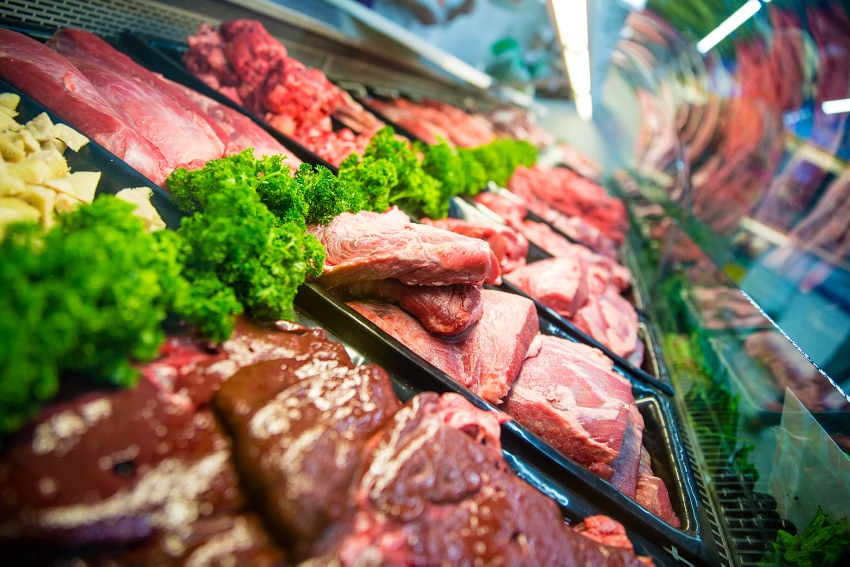IFIC details agency efforts to assure safety of meat during COVID-19 pandemic.
October 1, 2020

During the COVID-19 pandemic, many people have been buying and cooking food and hosting gatherings in different ways, according to the "Food Insight" newsletter from the International Food Information Council (IFIC). World health authorities are putting an emphasis on safe food handling (including frequent hand washing), social distancing and mask wearing, all of which are noted as being potentially helpful in minimizing germ transfer, including transmission of the novel coronavirus.
Still, many people may be concerned about the safety of the meat at local stores and markets or the meat dishes at drive-thru or takeout places.
IFIC's Food Insight recently delved into the issue of how safe the meat supply is.
Safety assurances
In the midst of the pandemic, many media outlets have reported on the health status of farmers, ranchers and workers at meat processing facilities. With this news coverage, questions have arisen about COVID-19 being transferred to consumers via meat products and packaging.
The U.S. Food & Drug Administration, the World Health Organization and many other international health organizations have affirmed repeatedly for many months that the coronavirus is not transmitted to people via food products, and their confidence includes foods that may have been handled by potentially infected food system workers, IFIC reported. The primary method of transmission of COVID-19 is via person-to-person contact that promotes the spread of respiratory droplets that carry the coronavirus.
FDA issued a statement on June 24, 2020, noting, “The United States understands the concerns of consumers here domestically and around the world who want to know that producers, processors and regulators are taking every necessary precaution to prioritize food safety, especially during these challenging times. ... There is no evidence that people can contract COVID-19 from food or from food packaging. The U.S. food safety system, overseen by our agencies, is the global leader in ensuring the safety of our food products, including product[s] for export.”
Another important safety point from FDA is that the Centers for Disease Control & Prevention has worked in conjunction with the Occupational Safety & Health Administration to support food worker safety during the pandemic. The two agencies issued guidance for manufacturing facilities — including food facilities — specific to controlling the spread of COVID-19 among workers. This guidance is distinct from and in addition to the food safety requirements that all U.S. food manufacturing facilities must follow to ensure food safety, IFIC noted.
The U.S. Department of Agriculture has a stringent set of rules for assuring the high safety standards of meat products, and meat processors must follow these rules in order to operate as legal and federally recognized establishments.
These rules include the stipulation that slaughter facilities cannot conduct slaughter operations if USDA's Food Safety & Inspection Service (FSIS) personnel are not present. Specifically, FSIS is responsible for ensuring the safety and wholesomeness of meat, poultry and processed egg products and ensures that they are labeled accurately.
Only federally inspected establishments can produce products that are destined to enter interstate commerce or be exported to foreign countries. These rules must be followed in order to avoid citations from inspectors and halted operations.
As IFIC has explored previously, it's also important to note that the novel coronavirus has relatively poor survivability on surfaces (fewer than three days), meaning there is a low risk of it spreading from food products (including meat) or packaging that is shipped over a period of days or weeks at ambient, refrigerated and frozen temperatures.
Meat safety at home
The meat products available at grocery stores and restaurants are safe, but what else can people do to exercise caution? While there is no evidence that the coronavirus is transmitted via food consumption or food packaging, IFIC reported that there are some additional measures consumers should always take to safely consume meat products, regardless of the pandemic:
First, when you bring meat home, be sure to properly store it in the freezer or refrigerator until you are ready to use it.
When preparing food at home (or before eating food at a restaurant), it is extremely important to wash your hands. Hand washing is a top safe food handling practice. For food prep at home, clean your hands before and after touching raw meat to reduce the chances of transmitting microbial contaminants (e.g., viruses and bacteria). In addition, keep your cooking surfaces clean, and use a separate cutting board for meat products.
Checking the temperature of meats with a food thermometer as you cook them is essential for food safety. Cooking temperatures vary for different types and cuts of meat. Even a professional chef cannot tell if meat is done just by looking at it. In addition, the novel coronavirus is sensitive to heat, so cooking meat to safe minimum temperatures will help eliminate any live virus as well as further allay "meat fears," the IFIC newsletter noted.
On top of trusting federal regulations that keep the food system safe, it is important for everyone prepping meals at home and eating on the go to remain mindful of how to avoid contaminating food unintentionally.
Food Insight is the information hub created and maintained by nutrition and food safety experts at IFIC, a nonprofit educational organization with a mission to effectively communicate science-based information about health, nutrition, food safety and agriculture.
Its resources are derived from peer-reviewed science and the work of bodies such as FDA, USDA, the National Academies of Sciences, Engineering & Medicine, the European Food Safety Authority and others.
Source: IFIC Food Insight.
You May Also Like



